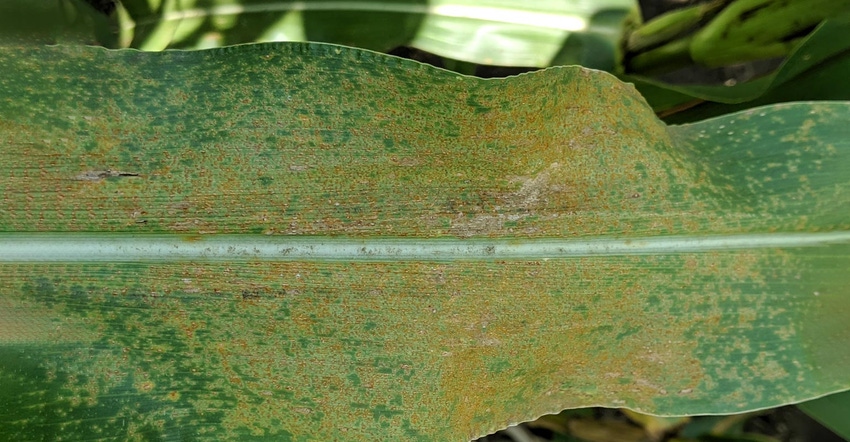
Applying a fungicide on corn late in season — at the onset of tasseling and silking — sometimes keeps the plants green and health through the rest of the growing season.
But in the Dakotas, the practice may not always pay.
Usually, corn in South Dakota is too far along in its development for the yield to be impacted by the time fungal diseases set in, says Emmanuel Byamukama, South Dakota State University Extension plant pathologist. Ultimately, infection levels are generally too low to affect yields.
For example, in SDSU trials at Beresford and Vogla in 2019, treating corn late in the season with a fungicide didn’t increase yields. Disease pressure was less than 3% at both sites, Byamukama says.
Sometimes, corn treated with strobilurin fungicides remains green longer than untreated corn, he says. However, no grain fill can take place after the black layer growth stage in corn, even if the leaves remain green.
In North Dakota, there are data that suggest that occasionally you get a yield response with fungicides on corn, says Joel Ransom, North Dakota State University Extension agronomist.
“To me, even an occasional positive response is somewhat surprising as we have almost no fungal disease development on corn in North Dakota,” Ransom says. “It is not just that the disease develops too late in the season, it is more that insufficient disease develops to cause yield losses, generally, in North Dakota. The only disease of importance is Goss’s wilt, which is bacterial and not controlled by fungicides.”
Southern rust different
One corn leaf disease that may be managed effectively with a fungicide application is southern rust.
“This disease can be devastating especially if it develops early in corn before the dent growth stage,” Byamukama says.
However, in the last five years, southern rust hasn’t developed until late in the season and infections levels have been low. It hasn’t impacted yields.
Late-planted corn, late-maturing hybrids and irrigated corn may have an elevated risk for southern rust, Byamukama says.
For information on which fungicides can control southern rust, see the regional Extension publication Corn Disease Management.
SDSU Extension Service provided information for this report.
Read more about:
Fungal DiseaseAbout the Author(s)
You May Also Like






